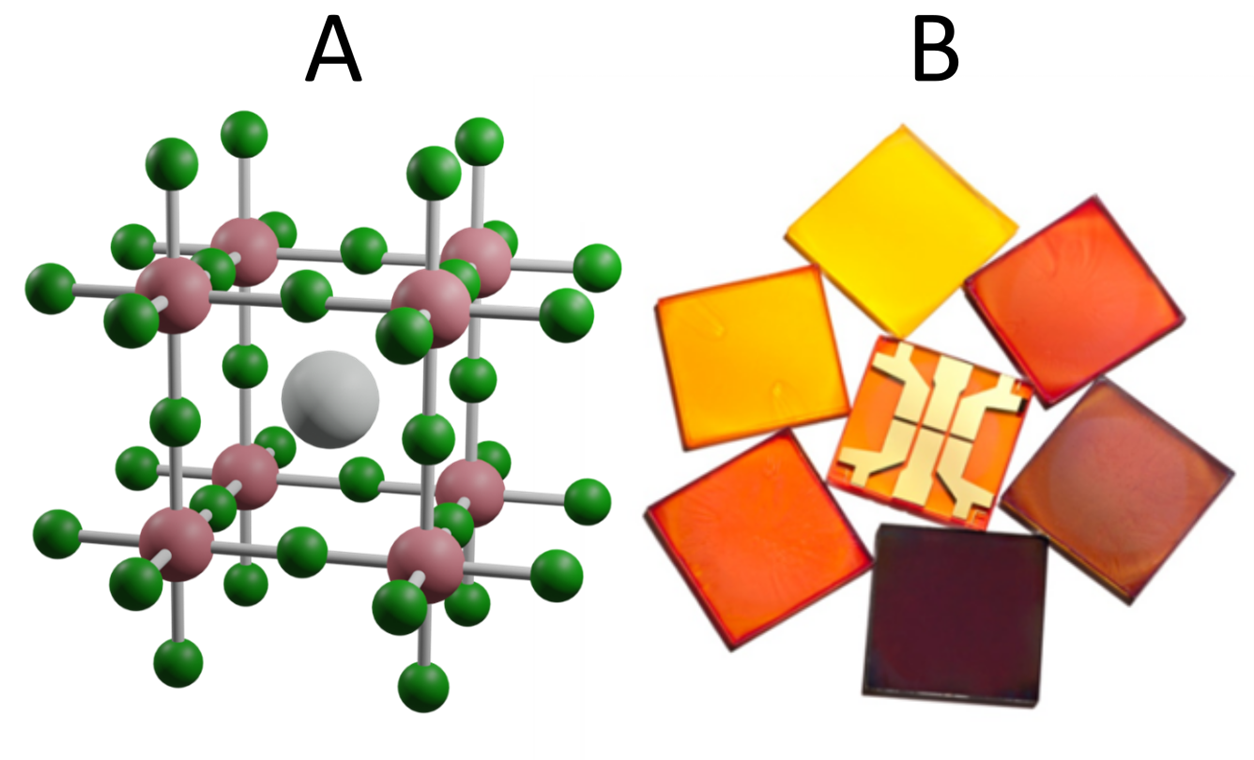In the Optoelectronics Group we investigate how light can be converted into electricity and vice versa. From the displays on your laptop or mobile phone, to the solar panels on your roof we aim to understand a class of materials called semiconductors, which when given a boost of energy are capable of generating electricity or emitting light. Crucially, semiconductors possess a ‘bandgap’ meaning there is a certain amount of energy required to promote electrons in the material between energy levels (known as the valence and conduction band). This can also work in reverse where electrons are injected into a material, first travelling into the conduction band before relaxing down to the valence band and emitting light. Sounds interesting? Come and learn more about just how important the bandgap is to optoelectronic devices, and get a feel for what it is like to be an electron in such a material, jumping back and forth across the bandgap!
Specifically, we are interested in recently discovered classes of materials, such as polymer or hybrid perovskite semiconductors which are set to make a major contribution to next generation devices (Figure 1). These materials produce devices which are so efficient that only very thin films are required during fabrication, making them lightweight, bendable and inexpensive- imagine solar cells you can print like newspapers or have built into your jacket! During our research we focus on fundamentally understanding these materials so we can optimize their performance and ultimately produce better solar cells, light emitting diodes and transistors. During your visit we hope to introduce you to the physics of semiconductors and give you an understanding of why and how they emit and absorb light. We will also discuss how the work we do is expected to impact society by combating climate change and how the next generation of semiconductors could provide novel applications.
Figure 1, A: The ABX3 perovskite crystal structure, where typically A is an organic cation (grey), B is Pb2+ or Sn2+ (pink) and X is a halide anion (green). B: Perovskite thin films of different bandgap (Plamen Petkov for Scientific American)
Further Reading and Resources
Dr Sam Stranks about perovskites revolutionizing photovoltaics @ TeD 2016
Cambridge Festival at CEB: The future of perovskites for solar power and lighting

